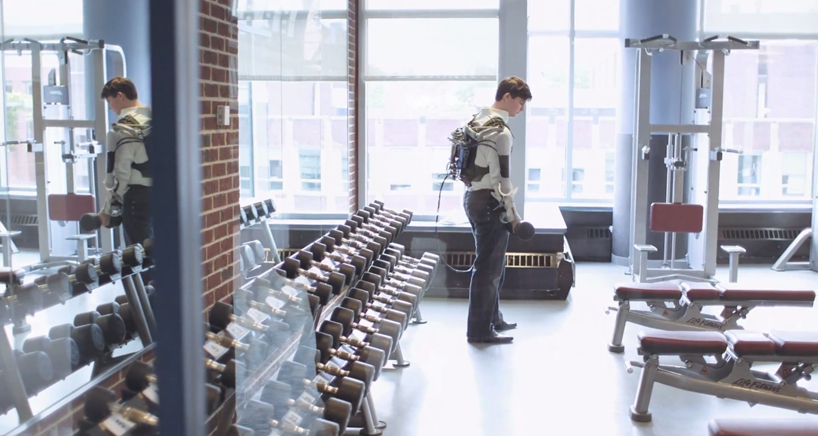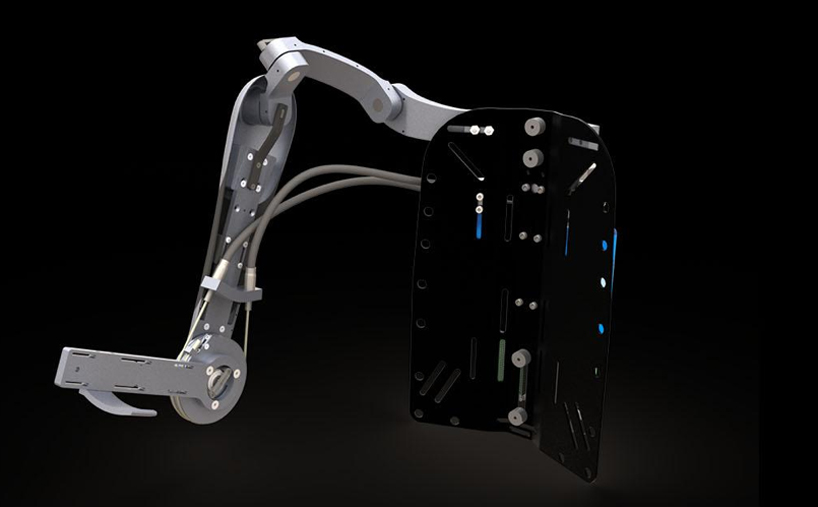Designing advanced exoskeletons for super-human strength seems like something Tony Stark (Iron Man) would do in his free time. However, exoskeletons find applications in the life of the common man too. A team of four undergraduate students at the University of Pennsylvania have designed ‘Titan Arm’, an upper-body exoskeleton that is controlled by the user through a joystick. The exoskeleton boosts lifting power by 40 pounds and is extremely cheap to make. So meritorious is the team’s design that it won this year’s James Dyson Award and $45,000 in prize money. But what is the reason behind their success? Market research and key choices in design have enabled the team to achieve their objectives with this project.
Titan Arm and its features
While researching other exoskeleton projects, the team found that a lot of work had been done on lower-body exoskeletons. To diversify, they decided to create something that would benefit the upper-body and chose to target the arms. The team’s preliminary research shows that it is important to first understand what projects have already been explored and where new breakthroughs can be achieved. This fact, no doubt, helped the team differentiate the Titan Arm from existing projects. Furthermore, research can be helpful because it can be a source of ideas.

Titan Arm can be used to “relearn fine motor control” after injury
When the team discovered that other exoskeletons were powered by pressurized gas cylinders, they had an idea. Why not use batteries instead of heavy cylinders (which are heavy to carry around) to improve mobility? In the Titan Arm’s design, we see that a lithium polymer battery supplies power to the exoskeleton. A simple choice in design like this opens up a wide range of applications. For example, a postman can use Titan Arm to lift heavy packages. Furthermore, patients can make use of the exoskeleton to facilitate recovery from injury. The team is particularly enthusiastic about exploring electromyography, where “you apply patches to the user’s skin and read the activity of the muscle, then you can pass that on to tell the arm what to do”. In essence, this gets rid of the joystick and lets muscles dictate the direction of movement.
The team’s most noteworthy achievement is that they made the prototype with an incredibly low student budget: just $2,000. Other exoskeletons, such as that of Raytheon, “cost upwards of $100,000”. To put this into perspective, the team has created an exoskeleton with 1/50th the usual cost! The secret lies in another key choice in design: the use of 3D printing and CNC (computer numerical control) machining. In the first step, a digital rendition of the Titan Arm was created using CAD software. In the subsequent step, the CAD data is fed into a 3D printer or CNC machine which produces the parts to exact specifications with low cost. Clearly, computer-aided design helped the team stay within their $2,000 budget.

CAD model of the Titan Arm
Despite its triumphs, the Titan Arm suffers from a few trade offs. Firstly, is it safe to make the product accessible to everyone? Due to its low cost of production, the Titan Arm is affordable to many. People might use the strength-boosting feature to harm others physically. Secondly, the exoskeleton makes only the upper body stronger and leads to bicep growth. The rest of the body might experience an increase in strain in trying to support the stronger upper body. Thirdly, any mistakes while controlling the joystick could lead to serious damage. Unbalanced forces on a certain joint can lead to broken bones or ligament tears.
On a personal level, I find the Titan Arm project inspiring. The team consisted entirely of undergraduates and if they can do it, why can’t I? I want to make a positive impact on the world and this example has shown me how design engineering is a means to do so.

Titan Arm empowers those in need of strength
References used:
http://www.designboom.com/technology/titan-arm-exoskeleton-wins-2013-james-dyson-award-11-08-2013/
http://www.theguardian.com/technology/2013/nov/07/3d-printed-robot-arm-wins-dyson-award
http://www.jamesdysonaward.org/Projects/Project.aspx?ID=3414
